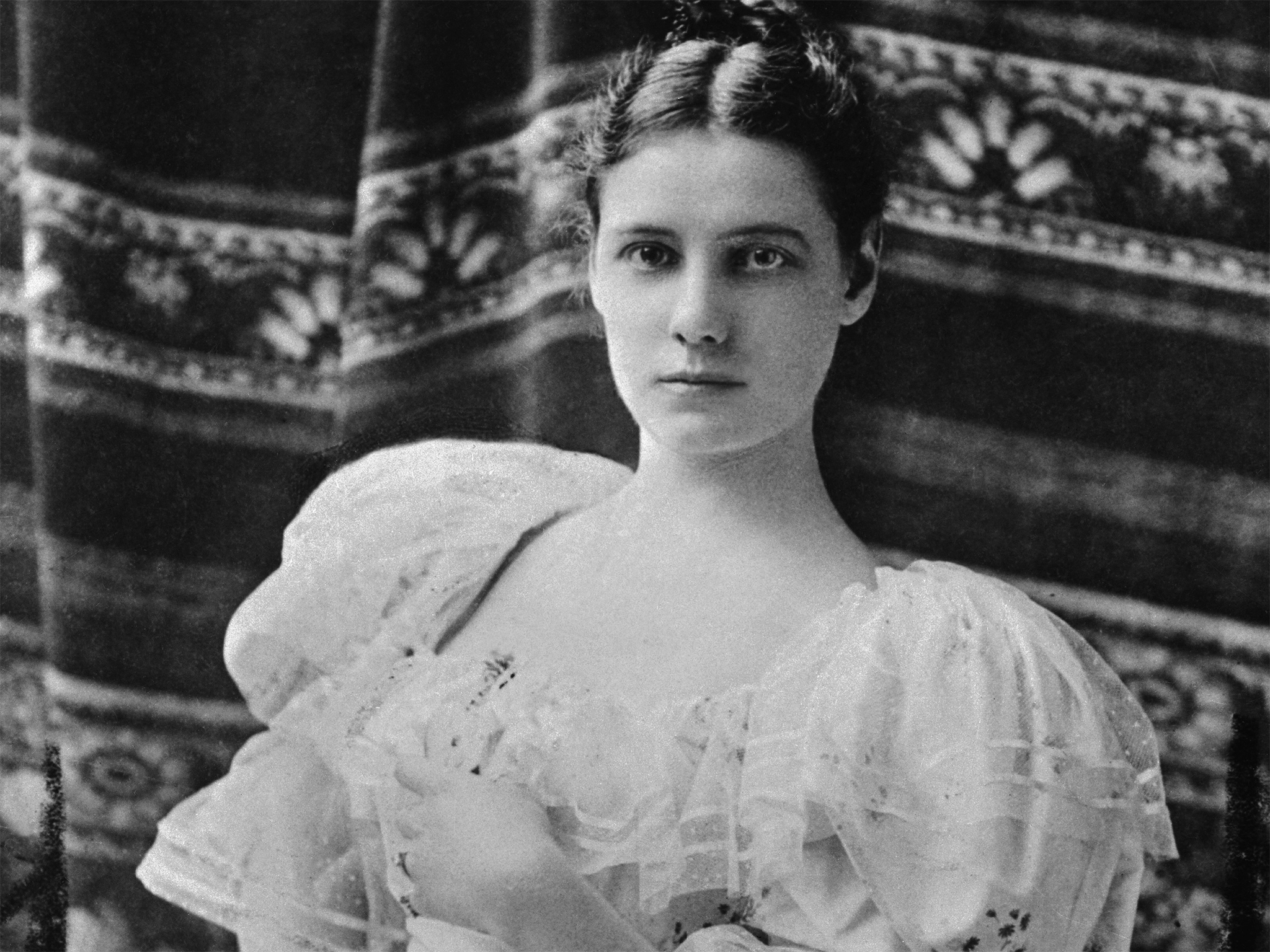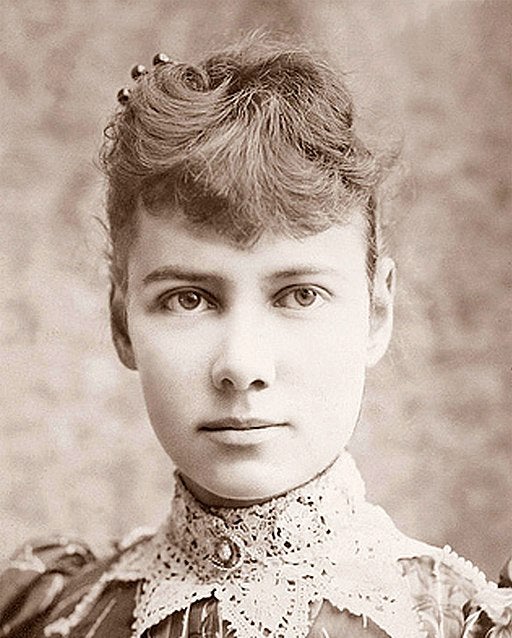The woman who exposed 19th-century New York’s inhumane treatment of mental health patients
She brought the horrors of an insane asylum to the public and paved the way for serious investigative journalism. Now Nellie Bly is getting her dues, Diane Bernard reports

Your support helps us to tell the story
From reproductive rights to climate change to Big Tech, The Independent is on the ground when the story is developing. Whether it's investigating the financials of Elon Musk's pro-Trump PAC or producing our latest documentary, 'The A Word', which shines a light on the American women fighting for reproductive rights, we know how important it is to parse out the facts from the messaging.
At such a critical moment in US history, we need reporters on the ground. Your donation allows us to keep sending journalists to speak to both sides of the story.
The Independent is trusted by Americans across the entire political spectrum. And unlike many other quality news outlets, we choose not to lock Americans out of our reporting and analysis with paywalls. We believe quality journalism should be available to everyone, paid for by those who can afford it.
Your support makes all the difference.When she went undercover in a New York City insane asylum in 1887, Nellie Bly was surrounded by a world of grim horror.
“Nearly all night long I listened to a woman cry about the cold and beg for God to let her die. Another one yelled, ‘Murder!’ at frequent intervals and ‘Police!’ at others until my flesh felt creepy,” Bly wrote about her first night at the institution in her exposé for Joseph Pulitzer’s New York World.
Bly’s covert operation exposing abuses at the asylum at Blackwell’s Island, now Roosevelt Island, pioneered a path for women in newspapers and launched what morphed into serious investigative journalism. The account by the 23-year-old “girl detective” shocked the public with its depiction of brutality and violence.
Now the journalism pioneer is getting her own monument – at the very site she wrote about.
With the city looking to create more public art celebrating women, Roosevelt Island leaders plan to pay tribute to the groundbreaking reporter, according to art news site Hyperallergic.
“She was an extraordinary woman,” Susan Rosenthal, president of the Roosevelt Island Operating Corp, says of Nellie Bly.
Rosenthal says her organisation is sponsoring a competition for an artist to create the memorial, which can be a standard sculpture or a digital or interactive creation. The group plans to unveil the piece, which has a budget of $500,000 (£410,000), in the spring of 2020.
For 10 days, Bly, who was born Elizabeth Cochrane outside of Pittsburgh, lived side by side with women who were suicidal, violent and psychotic, as well as perfectly sane women who were mistakenly confined to the institution.
Writing as Nellie Bly, a pen name taken from a Stephen Foster song, she was a courageous crusader to let herself be committed into an insane asylum with no guarantee that she’d be able to leave, says Brooke Kroeger, author of Nellie Bly: Daredevil, Reporter, Feminist.
“She was part of the ‘stunt girl’ movement that was very important in the 1880s and 1890s as these big, mass-circulation yellow journalism papers came into the fore,” Kroeger says.

After working for the Pittsburgh Dispatch for a few years, Bly got the dangerous assignment to infiltrate the infamous asylum from Joseph Pulitzer himself, after she blustered her way into his offices, according to Kroeger’s book.
She promised Pulitzer she could deliver a major story, and, impressed by her moxie, he gave her a whopper of an assignment: to go undercover at the asylum with no guidance even on how to gain entry, never mind how to get out.
In her first piece for a major metropolitan daily, in late September 1887, Bly threw herself into the role of a deranged woman to get committed.
Bly practiced looking insane in front of a mirror with the idea that “far-away expressions have a crazy air”, she wrote in her article. Then she checked herself into a working-class boardinghouse, hoping to frighten the other boarders so much that they would kick her out.
Using the name Nellie Brown, she pretended she was from Cuba and ranted that she was searching for “missing trunks”. Her ruse worked and the police were called. She had a hearing at a New York City court, where a judge ordered her to Blackwell’s Island, which at that time held a poorhouse, a smallpox hospital, a prison and the insane asylum.
The horrid condition of the food in the mess hall was her first dose of deprivation. Tea “tasted as if it had been made in copper”, she writes. Bread was spread with rancid butter. When she got a plain piece it was hard with a “dirty black colour ... I found a spider in my slice so I did not eat it”. The oatmeal and molasses served at the meal was “wretched”. The next day she was served soup with one cold boiled potato and a chunk of beef, “which on investigation, proved to be slightly spoiled”.
To add to the torment, Bly wrote, the building was freezing: “The draught went whizzing through the hall” and “the patients looked blue with cold.” Within her first few days, she was forced to take an ice-cold bath in dirty water, sharing two “coarse” towels among 45 patients.
“My teeth chattered and my limbs were goose-fleshed and blue with cold. Suddenly I got, one after the other, three buckets of water over my head – ice cold water, too – into my eyes, my ears, my nose and my mouth. I think I experienced the sensation of a drowning person as they dragged me, gasping, shivering and quaking, from the tub. For once I did look insane.”
Take a perfectly sane and healthy woman, shut her up and make her sit from 6am to 8pm on straight-back benches
Despite the autumn chill, Bly and the other inmates were given threadbare dresses with poorly fitted undergarments after the frigid baths.
“Take a perfectly sane and healthy woman, shut her up and make her sit from 6am to 8pm on straight-back benches, do not allow her to talk or move during these hours ... give her bad food and harsh treatment, and see how long it will take to make her insane. Two months would make her a mental and physical wreck,” Bly wrote.
Bly made a point of talking to as many women as she could. Among the sane ones, she found that many were immigrants who didn’t understand English and seemed to have been mistakenly committed to the island. Others were just poor and thought they were going to a poorhouse, not an insane asylum, she wrote. All related horrible stories of neglect and heartless cruelty.
Mrs Cotter, “a pretty, delicate woman”, told Bly that, “for crying, the nurses beat me with a broom-handle and jumped on me, injuring me internally, so that I shall never get over it”. She said the nurse then tied her hands and feet, threw a sheet over her head to muffle her screams and put her in a bathtub of cold water. “They held me under until I gave up every hope and became senseless.”
“The beatings I got there were something dreadful,” Bridget McGuinness told Bly. “I was pulled around by the hair, held under the water until I strangled, and I was choked and kicked ... It was hopeless to complain to the doctors, for they always said it was the imagination of our diseased brains, and besides we would get another beating for telling.”

Nurses drugged inmates with “so much morphine and chloral that the patients are made crazy,” Bly reported. “The attendants seemed to find amusement and pleasure in exciting the violent patients to do their worst,” she wrote.
Exhausted and starving, Bly was relieved when, 10 days after her entry into the asylum, lawyers from the New York World arranged for her release. Though sorry to leave the suffering women, Bly was eager to write about what she had seen.
Two days later, on 9 October 1887, the New York World printed the first part of Bly’s two-part illustrated series on the front page of the Sunday feature section. The blaring headlines of the second instalment enticed readers: “Inside the Madhouse”; “Nelly Bly’s Experience in the Blackwell’s Island Asylum”; “How the City’s Unfortunate Wards are Fed and Treated”; “The Terrors of Cold Baths and Cruel, Unsympathetic Nurses”; according to Kroeger’s book.
Bly’s first-person account of abuse shocked the public. “Writers like Charles Dickens and Margaret Fuller had toured insane asylums and written about them. But those were guided tours and they didn’t see much,” Kroeger says.
“To succeed at feigning insanity and live to write about it was an extraordinary feat,” Kroeger writes in her book. “As the achievement of a woman journalist in this period, its brilliance was blinding ... Fame is ignited and spread fast and far.”
The story was so explosive that competing newspapers produced their own accounts of how Bly succeeded in her dangerous work, just to join in on the exposé.
Meanwhile, city officials began investigating the institution. A month later, a grand jury panel went with Bly to visit the asylum. But it was too late. Inmates who told Bly of their treatment had been transferred or released. Buildings had been scrubbed down and patients had better food and water, according to Kroeger’s book.
But despite the cover-up, the grand jury believed what Bly had written. Shortly after the visit, officials added nearly $1m to the asylum’s budget, an enormous amount for 1887, according to Kroeger’s book.
Bly’s two-part series was released as a book two months later, called Ten Days in a Mad-House.
Bly established her reputation as a “stunt girl” with a social justice bent. She went on to write exposés of baby-selling rackets and harsh conditions for factory workers, Kroeger writes.
Two years later, Bly made an even bigger splash with her series following the same route as the Phileas Fogg character in Jules Verne’s Around the World in 80 Days. She made the trip in 72 days, to much acclaim.
When she returned, she expected a bonus or more recognition. But Joseph Pulitzer barely acknowledged her feat. In response, Bly quit the New York World in disgust, Kroeger writes.
Nellie Bly didn’t return to journalism until much later in her life, when she covered the eastern front during the First World War, according to Kroeger’s book. She died of pneumonia in 1922 at age 57. But her groundbreaking Ten Days in a Mad-House ushered in a new age of newspaper writing.
© Washington Post
Join our commenting forum
Join thought-provoking conversations, follow other Independent readers and see their replies
Comments